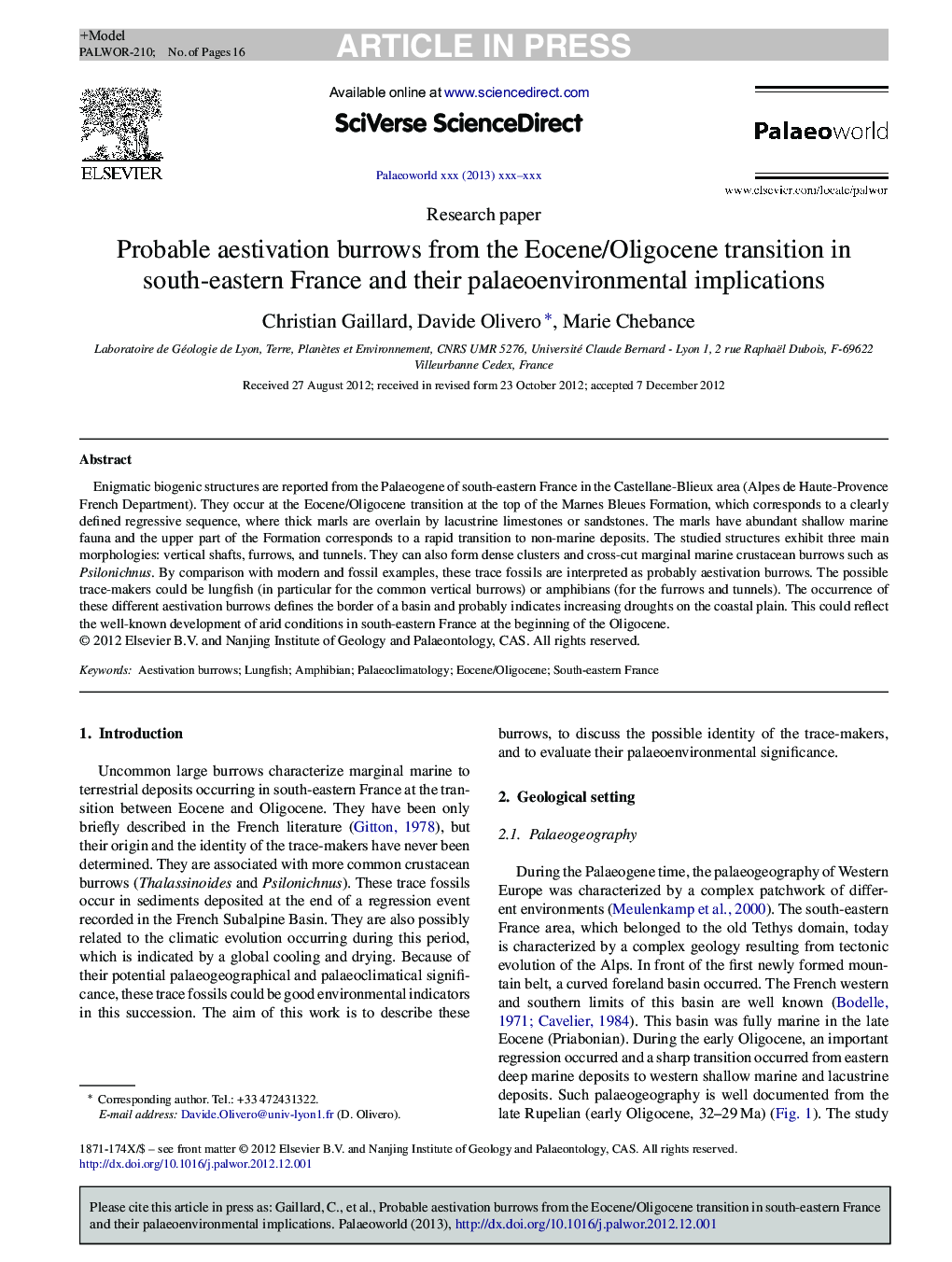| کد مقاله | کد نشریه | سال انتشار | مقاله انگلیسی | نسخه تمام متن |
|---|---|---|---|---|
| 4749759 | 1642278 | 2013 | 16 صفحه PDF | دانلود رایگان |
عنوان انگلیسی مقاله ISI
Probable aestivation burrows from the Eocene/Oligocene transition in south-eastern France and their palaeoenvironmental implications
ترجمه فارسی عنوان
گرایش به احتمال زیاد از انتقال گذار ائوسن / اولیگوسن در جنوب شرقی فرانسه و پیامدهای محیط زیستی آن
دانلود مقاله + سفارش ترجمه
دانلود مقاله ISI انگلیسی
رایگان برای ایرانیان
کلمات کلیدی
موضوعات مرتبط
مهندسی و علوم پایه
علوم زمین و سیارات
فسیل شناسی
چکیده انگلیسی
Enigmatic biogenic structures are reported from the Palaeogene of south-eastern France in the Castellane-Blieux area (Alpes de Haute-Provence French Department). They occur at the Eocene/Oligocene transition at the top of the Marnes Bleues Formation, which corresponds to a clearly defined regressive sequence, where thick marls are overlain by lacustrine limestones or sandstones. The marls have abundant shallow marine fauna and the upper part of the Formation corresponds to a rapid transition to non-marine deposits. The studied structures exhibit three main morphologies: vertical shafts, furrows, and tunnels. They can also form dense clusters and cross-cut marginal marine crustacean burrows such as Psilonichnus. By comparison with modern and fossil examples, these trace fossils are interpreted as probably aestivation burrows. The possible trace-makers could be lungfish (in particular for the common vertical burrows) or amphibians (for the furrows and tunnels). The occurrence of these different aestivation burrows defines the border of a basin and probably indicates increasing droughts on the coastal plain. This could reflect the well-known development of arid conditions in south-eastern France at the beginning of the Oligocene.
ناشر
Database: Elsevier - ScienceDirect (ساینس دایرکت)
Journal: Palaeoworld - Volume 22, Issues 1â2, June 2013, Pages 52-67
Journal: Palaeoworld - Volume 22, Issues 1â2, June 2013, Pages 52-67
نویسندگان
Christian Gaillard, Davide Olivero, Marie Chebance,
